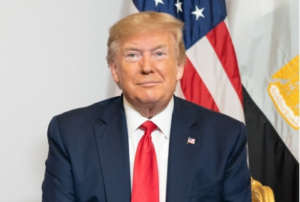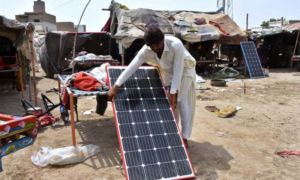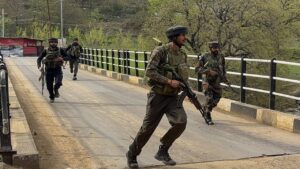
Show caption Zabihullah Mujahid, the Taliban spokesman, holds a press conference. Photograph: Marcus Yam/Los Angeles Times/Rex/Shutterstock US foreign policy Taliban in power may find themselves fighting Islamist insurgents Analysis: regime may face enemy composed of those, such as Isis supporters, who see new rulers as sellouts Jason Burke Wed 18 Aug 2021 05.10 BST Share on Facebook
Share on Twitter
Share via Email
Joe Biden has said the US will maintain an “over the horizon” counter-terrorism capability to neutralise the threat posed by Islamist extremist groups in Afghanistan.
With no troops on the ground, no intelligence-gathering operation in the country and no ally with shared borders, this kind of long-range effort to stop plots targeting the west will not be easy – and is made significantly harder by the range of the organisations based in territory now nominally under Taliban control.
What any violent extremist group needs more than anything else is a secure location where it can plan, organise, recruit, strategise and gather resources. Without this, few insurgents and terrorists survive, let alone succeed. Pakistan provided this to the Taliban, greatly aiding their 20-year campaign that ended in victory this week. Al-Qaida had one from 1996-2001 – and it was the prospect of losing the haven that Afghanistan offered that led many of its most senior leaders to oppose Osama bin Laden’s plan to launch the 9/11 attack on the US.
Al-Qaida was forced to flee Afghanistan after the war of 2001 but has slowly returned. It does not have anywhere near the extensive infrastructure of 20 years ago when it ran a dozen training camps. Instead, its 200-500 fighters are dispersed across much of the country. Many are from al-Qaida in south Asia, an affiliate set up with Pakistani, Indian and Bangladeshi recruits in 2014 to further the organisation’s aims in the region. Others have been fighting alongside the Taliban, with whom they have “close relations”, intelligence services have told the United Nations.
Ayman al-Zawahiri, the organisation’s current leader, has eschewed long-range attacks against the west since taking over in 2011 to focus on building a grassroots presence in places such as the Sahel, Somalia, Yemen and, with limited success, Syria. But this could change.
What could Taliban rule mean for Afghanistan? – video explainer
Perhaps the ugliest character in the Star Wars bar for extremists that Afghanistan has become is Islamic State’s “Khorasan Province”, a faction that has adopted a historic name for a swath of land stretching from Iran to the western Himalayas. This faction was founded in 2015 as Isis sought to extend its territorial reach from its heartland in Iraq and Syria further east. The effort has not fared well. The Taliban opposed this expansion and fought the ISKP. So too did al-Qaida, the Afghan government’s forces and the US. Unsurprisingly, the new venture withered under the combined firepower directed against it and early gains were quickly reversed.
But in recent months the ISKP appears to have got a second wind, carrying out a series of lethal operations with its trademark brutality. During the first four months of 2021, the United Nations Assistance Mission in Afghanistan (UNAMA) recorded 77 attacks claimed by or blamed on ISKP. These have targeted the group’s customary targets: Shia Muslims, women and foreigners, as well as civilian infrastructure and military personnel.
Unlike al-Qaida, the group remains very much committed to long-range attacks against the “far enemy” in the west, and this is likely to become more of a priority now that the immediate “near enemy” – the government in Kabul and its US protectors – have gone. The Taliban may well try to prevent such operations but will be unable to watch every corner of the sprawling, rugged country, especially as much of it is in effect ruled by local power brokers who make their own decisions about who does what and where.
Then there is a range of other Islamist militant factions, none of which pose a huge threat by themselves but whose activities could further destabilise the region, or at least facilitate an attack by another group or even a lone actor. The UN believes there are between 8,000 and 10,000 foreigners currently bearing arms in Afghanistan.
Many perpetrators of terrorist attacks in Europe and elsewhere in the last decades travelled to Pakistan to receive training. This was often a vital step, not so much for the knowledge imparted as for the reinforcement of radicalism that the experience brought. The Taliban have tried to at least regulate, if not restrict, the presence of so-called “foreign fighters” but are unlikely to be able to prevent all such visits.
Though the Taliban have brought the remnants of most of the central Asian extremist Islamist groups based in the north of Afghanistan under their authority, reportedly even deploying some to guard border posts, the Eastern Turkistan Islamic Movement, composed of Uyghur fugitives from south-western China who aim to violently fight Beijing’s repression of their culture and faith there, are more capable and active.
Most concerning is probably the complex mix of Pakistani factions based in eastern Afghanistan. These are almost entirely focused on fighting local battles, but the TTP, or Pakistani Taliban, have a long history of brutal violence. So too have other extremist groups that have migrated from Pakistan across the border.
All these groups follow the extremist ideology known to analysts as “jihadi Salafism”, a fusion of ultra-conservative strands of Sunni Islam practised in the Gulf with a newer and radical belief that it is the duty of every Muslim to fight individually as well as collectively against “tyranny”, wherever it is found. This kind of thinking contrasts dramatically with the old folk traditions of Islamic observance in Afghanistan and even with the reactionary schools followed by the Taliban. Observers say the success of Isis in Syria and Iraq, even if the caliphate ended in blood and failure, have inspired some younger Afghans, spreading jihadi Salafism further.
If so, the Taliban in power may find themselves fighting their own insurgents, composed not of those loyal to the former US-backed government but those who see their new rulers as sellouts.








